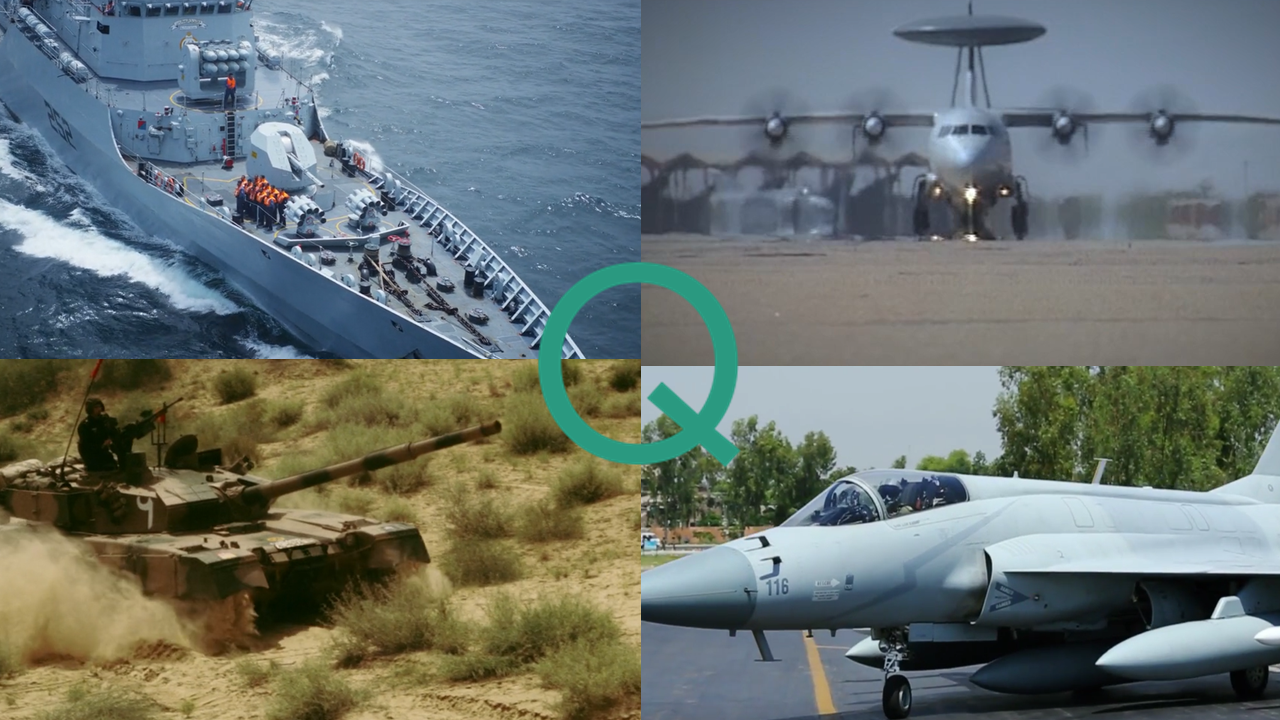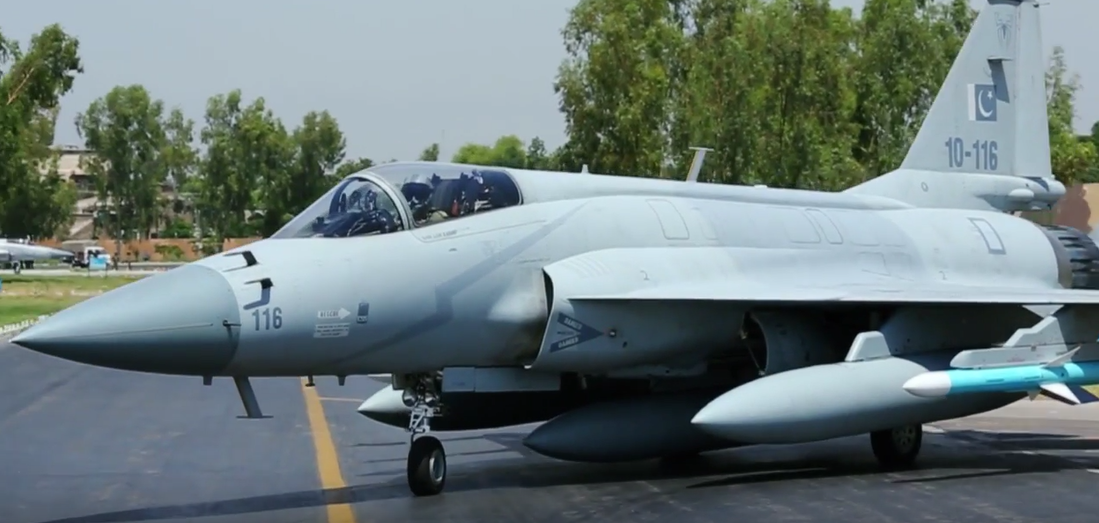2971Views 7Comments

This Week in Defence News
26 February 2016
Every Friday, Quwa offers coverage and short-form analysis of various news topics. It can be a challenge to offer in-depth reporting for every interesting news piece, so we invite you, our readers, to engage and share with us your knowledge and insights on issues and topics that interest you the most.
Be sure to get in touch with us on Facebook and Twitter!
New Chinese missiles revealed at the Singapore Airshow
The China National Aero-Technology Import and Export Corp. (CATIC) began marketing its TL-2 and TL-7 missiles at the Singapore Airshow, which took place last week.
With a range of 180km, the TL-7 is a sub-sonic anti-ship missile (AShM) capable of being launched from surface warships, aircraft and ground-based launch systems. According to Dr. Richard Fisher, a close observer of China’s military developments, the TL-7 is likely based on the KD-88. CATIC is positioning the missile to compete against the C-802A, which is offered by the China Aerospace Science and Industry Corporation (CASIC).
It is unclear what improvements the TL-7 offers over the C-802, which has seen some success in the export market, but a lighter weight AShM could be compelling, especially for fighter aircraft such as the JF-17.
The TL-2 is a short-range air-to-ground missile designed for use by light aircraft, such as the ASN-209 unmanned aerial vehicle (UAV). The TL-2 has a range of 6 km and an accuracy of 2-8 metres CEP. Specifics have not been given in terms of the TL-2’s guidance options, such as the question of whether it is capable of being tipped with a millimeter wave (mmW) seeker.
China presents L-15 as a multi-role fighter option
CATIC is also pitching the L-15 lead-in fighter-trainer (LIFT) platform as a lightweight multi-role fighter.
At the Singapore Airshow, CATIC showcased a mock-up of the L-15 equipped with a range of air-to-air and air-to-surface munitions. Defense News was able to identify the SD-10 beyond visual-range air-to-air missile (BVRAAM), PL-5E-II within-visual-range air-to-air missile (WVRAAM), and LS-6 precision-guided bomb (in its 250 kg and 500 kg formats).
Although designed as an advanced trainer, the L-15 has the physical performance benchmarks to operate as a fighter. For example, the L-15 possesses a maximum payload of 3000 kg (distributed across six hardpoints), ferry range of 3,100 km, and combat radius of 550 km (Air Force Technology).
With China’s full arsenal of exportable air-to-air and air-to-surface munitions, the L-15 can give aircraft competing for the low-end of the market, e.g. advanced trainers, lightweight fighters (e.g. JF-17), and light attack aircraft (e.g. Super Tucano), serious competition.
Is the KG600 EW/ECM pod available for sale?
At the Singapore Airshow, Defence News was also able to spot an L-15 mock-up equipped with the KG600 electronic warfare (EW) and electronic countermeasure (ECM) pod. If the system shown on the L-15 is indeed the KG600 (and not the older KG300), it would be a fairly significant development. The KG600 is at the center of China’s tactical EW strategy. For example, not only is it equipped on its various combat aircraft, such as the JH-7A, but it is also a key element of its J-16-based dedicated-EW aircraft.
CATIC FC-20 is the J-10A
Aviation Industry Corporation of China (AVIC) also marketed the FC-20 at the Singapore Airshow. It seems the FC-20 is simply the J-10A, and not the much improved J-10B or J-10C.
For those not familiar, the Pakistan Air Force (PAF) had planned to induct 36-40 FC-20s as part of its fleet modernization program. However, it has since walked away from the idea, and is opting to center its short-term fighter-acquisition needs on the JF-17 and F-16.
To the PAF, the FC-20 simply did not offer enough of a performance jump (relative to existing PAF fighters) to justify the costs of inducting an entirely new platform. AVIC’s confirmation that the FC-20 is the J-10A and not the newer J-10B/C offers additional and much-needed context into the PAF’s view. In fact, Alan Warnes, a leading defence aviation observer and writer (especially in regards to the PAF), also noted (in July 2015) that the J-10B was not cleared for export.


7 Comments
by Catalyst
Thanks for the updates Admin.
Could you please do a dedicated piece on EW/ECM etc (ground based, air borne, Naval and satellite targeting variants if possible). It would be interesting for most of the readership I’m sure.
Regards!
by jigsaww
Regarding the FC-20, the concerns primarily are not regarding export-clearance but of PAF’s own reluctance to pursue this platform. J-10A failed to meet PAF’s requirements (as it was directly pitched to PAF as F-16 replacement) and evaluations. PAF have had discussions in past with china to improve the J-10 for its possible acquisitions but with F-16s coming in rather freely, PAF dropped its plans for J-10. It’s important to understand that PAF will never go for Chinese jets unless all its options are exhausted which is why JF-17 was created on PAF’s own requirements rather than buying Chinese home produced jets. As long as F-16s are available or Russians agree to selling in future, PAF will keep availing those options. As far as the technology on J-10 is concerned, it is already available for JF-17 program with China’s own consent and PAF have planned to make JF-17 better than J-10C, and it will because of its better partnership with Italy and South Africa in past. JF-17 program in many ways is already better than J-10.
In the same logic, the only reason PAF will go for J-31 is that there is no other option available at PAF’s budgets. Chinese can always waive off their export control if PAF pursues it seriously though it seems logical now to drop J-10 entirely and go for introduction of a 5th gen platform by 2020/22 (that some sort of clarity or deal occurs). By 2025 there will be plenty eurofighters and F-16s available in open market, upgradable and far better than J-10C. China is already offering next gen tech on J-31 to Pakistan, so a question mark on J-10 is less likely a valid concern now.
by Abdul Rashid
What are the prospects of potential buyers choosing the L-15 over JF-17? Any key advantages to choose one over the other?
interestingly, Wikipedia states Pakistan has expressed an interest in the L-15. With the same weapons integrated on both platforms (JF-17 and L-15) it could be an ideal opportunity to boost PAF’s fighter fleet as well as acquire a new advanced trainer. Killing two birds with one stone metaphorically speaking and if it comes to it, killing many birds with the two birds in the more literal sense ;).
by Abdullah Aman
I think pakistan should go just with JF-17 upgrade J-10 is not that much improvement over F-16 JF-17 will be going to be 4+ fighter so why waste money on J-10
2nd i think Pakistan should save money jump directly on to 5th generation of fighter and J-31 is the only viable option now unless turkey make its plane which will use western avionic so that will be pretty useless to us the benefit of china defense deal to pakistan is with every deal we make it is and will be with technology transfer
by Abdullah Aman
Pakistan interested in L-15 as training aircraft it is a advance trainer jet but their 1st priority is training but they can be use a in attacks if needed we do not need L-15 as in a role of fighter bomber we got lower block JF-17 for that
2nd JF-17 is fighter plane because of it got more speed more loading limit it can do high G (8G) maneuvers and better avionics
L-15 is advance trainer that’s why i got less speed then JF-17 less G limit 5G or 6G and OK avionics
by A Rashid
Thanks for clarifying. My point was more towards both aircraft using same weapons from the same supplier (China). Can be useful and allow greater flexibility in utilisation of assets during war time, no?
by Abdullah Aman
every plane military have can be use in time for war even every type of trainer
yes we can utilization these assets during war time and these types of planes generally use for bombing and they can use chines weapon too in ground attack role they can give us some flexibility